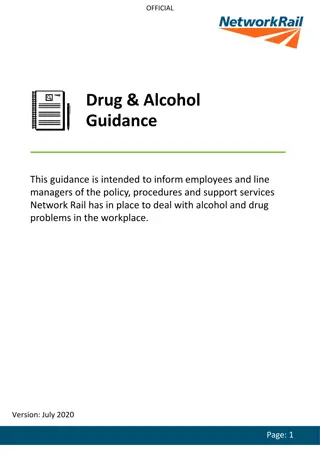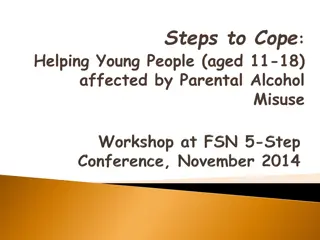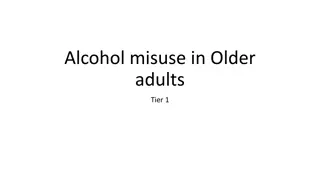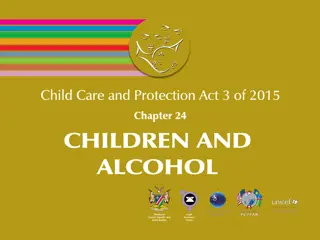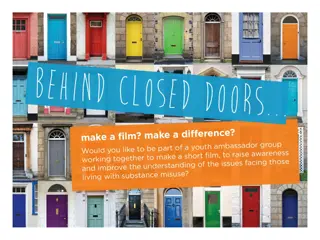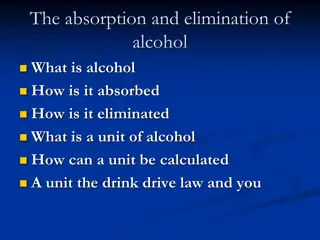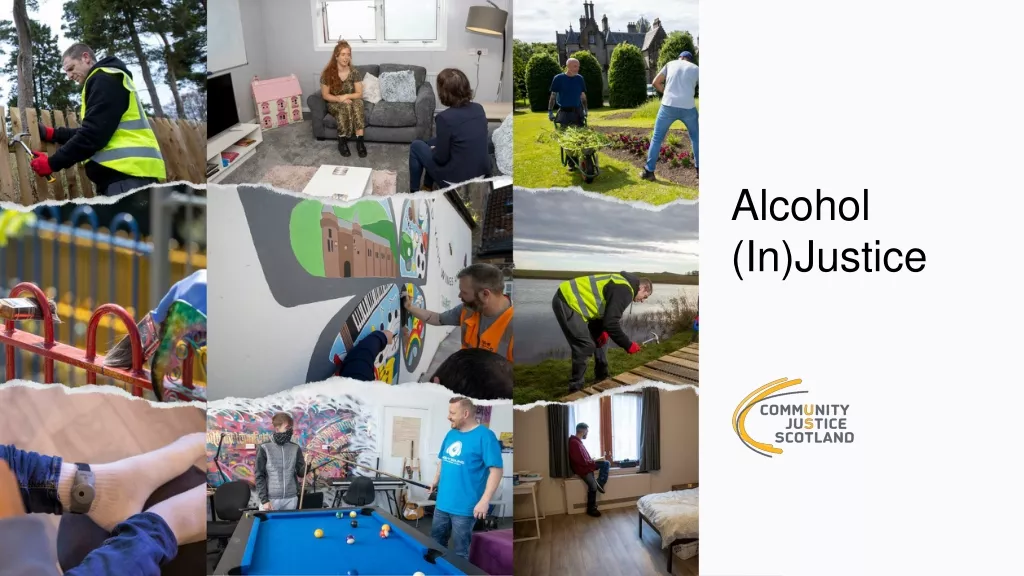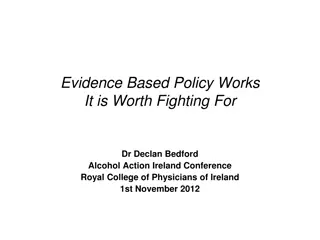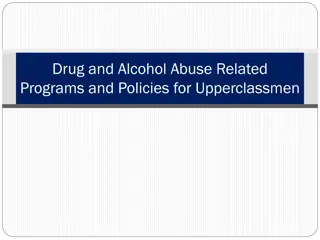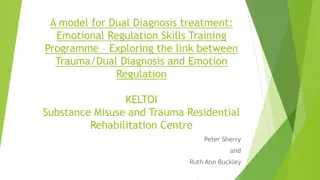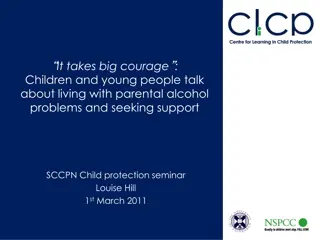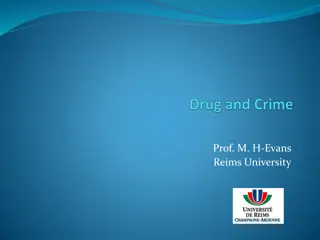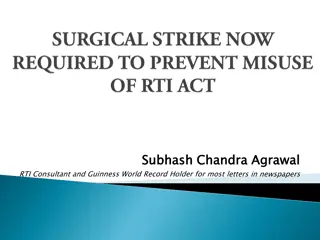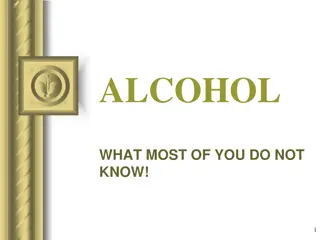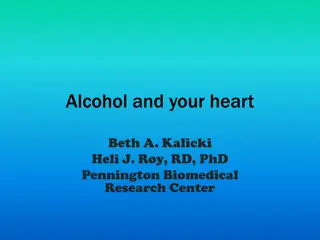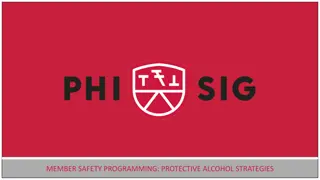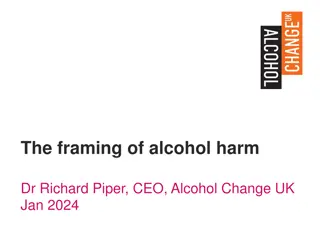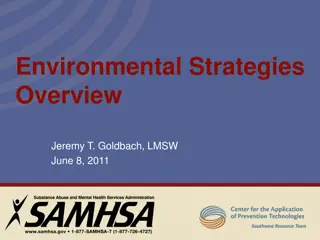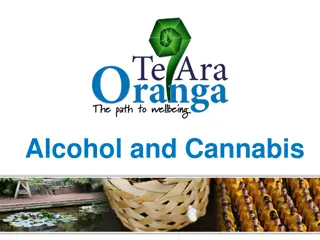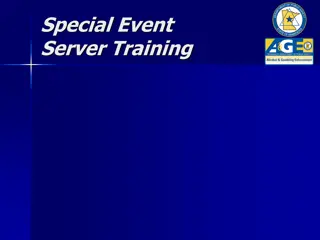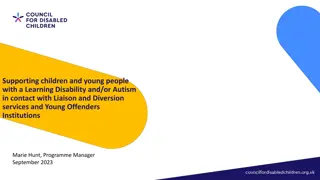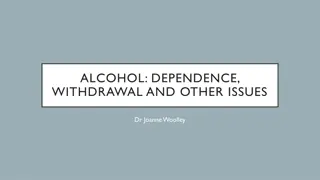Addressing Alcohol Misuse Among Children and Young People in Ireland
Ireland's National Youth Council, representing 55 youth organizations, advocates for legislation to tackle alcohol misuse among children and young people. Despite voluntary codes in place, a call for stricter measures and independent monitoring is made to protect youth from harmful advertising and marketing practices by the alcohol industry.
Download Presentation

Please find below an Image/Link to download the presentation.
The content on the website is provided AS IS for your information and personal use only. It may not be sold, licensed, or shared on other websites without obtaining consent from the author. Download presentation by click this link. If you encounter any issues during the download, it is possible that the publisher has removed the file from their server.
E N D
Presentation Transcript
James Doorley Assistant Director National Youth Council of Ireland
Representative body for 55 national voluntary youth organisations. Member orgs working in every community with tens of thousands of children and young people Recognised as a social partner Recognised in legislation as representative of youth work interests.
Alcohol misuse and alcohol related harm among children and young people is a major issue for member organisations. The statistics are a daily reality for youth workers on the ground. Impact of alcohol misuse is more significant than other illegal drugs. Traditionally lot of work done by youth orgs on education and awareness. Growing recognition in last decade with liberalisation that problem was growing and education and awareness was having little or no influence in isolation. (proven by research)
Evidence based approach led us to pursue advocacy around the key issues such as availability, price, marketing and advertising. Child Protection issue-delay age at which young people start to drink and quantities, strength and frequency NYCI had also participated in Liquor Licensing Commission, STFA, Special Initiative on Alcohol. NYCI come to conclusion that action was required on alcohol advertising and marketing to protect children and young people as part of an overall package of measures.
Ireland had given a commitment to protect children from pressures to drink (WHO/EU) 2002 interim Strategic Taskforce on Alcohol (STFA) recommended reduction in exposure. 2004 STFA final report recommended legislation. 2003 DOHC proposed legislation-agreed by Govt By 2005, this was replaced by a voluntary code and revised in 2008.
We want effective measures-code is window dressing. Provides political cover to Government and allows industry to give the impression of action when there is no impact. Code is akin to drinks industry writing its own exam questions and correcting the results. Does very little to address quantity, lack of independent monitoring and no consequences even when weak provisions are breached. Industry accepts that advertising and marketing is a problem by agreeing to a code. In the absence of meaningful action we explored other options to build the case for legislation.
Is Irelands stated commitment to protect young people from the pressures to drink reflected in actual experience of young people? Key aspect for NYCI was young person s perspective/participation. In line with our participation policy and national children s strategy.
To map young peoples exposure to alcohol marketing, as documented by young people. Mapping is defined as the detailed description and documentation by young people of alcohol marketing practices they are exposed to in their daily lives. Dr. Ann Hope was contracted by NYCI to undertake the research project and write the final report. Marie-Claire McAleer NYCI also worked closely with Dr. Hope on research methodology and report. Niamh McCrea contracted as youth leader to supported and coordinated the participation of the young people. Acknowledge funding from HSE to complete this research
Selected 16 young people from 4 regions Most aged 16/17, some 18/19 Young People were trained in research process. Protocol developed so that data collection was systemic-given record sheets, camera and asked to keep diary. Support from youth leader throughout. Data collection took place in 4thquarter 2007. Debriefing day at end of data collection.
13 of the 16 young people returned record sheets. A total of 157 relevant marketing practices were collected. Beer products Spirits/Liqueurs Wine Mixed products Alcopops Cider 57% 15% 11% 8% 5% 4%
Alcohol Marketing - Promotional Channels TV Mag/newspapers Internet Street flyers Billboards Supermarket Post Nightclub Pub Radio Cinema Merchandise Music Sports stadium Bus Play-station % 0 5 10 15 20 25 30
Marketing Appeal- Proportion within each communication channel 76 80 64 61 70 54 54 60 50 % 40 30 20 10 0 Place Broadcast Outdoors New media Print media
79% found marketing practices for spirits appealing 75% for alcopops Marketing practices of three beer brands. Carlsberg, Guinness and Heinekin particularly appealed to young people. Only a third found wine and cider marketing practices appealing.
1. Carlsberg Irish Language ad (TV) 2. Budweiser frog ad (internet) 3. Heineken Rugby ads 4. Guinness drum ad (TV) 5. Bulmers time dedicated to you (TV)
funny funny attractive attractive cheap is good linked to sport very smart refreshing clever clever Celebs look cool cool looks delicious catchy music eye catching eye catching very energetic colourful sponsors my sport interesting felt special after free offer very classy free caught my eye cheap/free cheap/free
Young people exposed to alcohol marketing and advertising through 16 different channels. Top 6 were television, internet, newspapers/magazines, street flyers, billboards and supermarkets/shops Packaging of spirits/alcopops most attractive Integrated marketing is common, 2/3rds reported this.
1 in every 4 marketing practice involved a price promotion. Location for price promotion, street followed by supermarket. Young people find alcohol marketing appealing-humour is the most important element, other aspects clever, cheap/free. 8 of the 10 most appealing alcohol marketing practices were TV ads.
Young people are exposed to extensive and pervasive alcohol advertising and marketing on a regular basis. Alcohol ads are effective, young people find them appealing. Existing codes making little or no difference. Research evidence shows that exposure to advertising and marketing increases the likelihood that young people will start to drink and to drink more. Action is required to restrict and limit alcohol marketing and advertising to protect children and young people.


